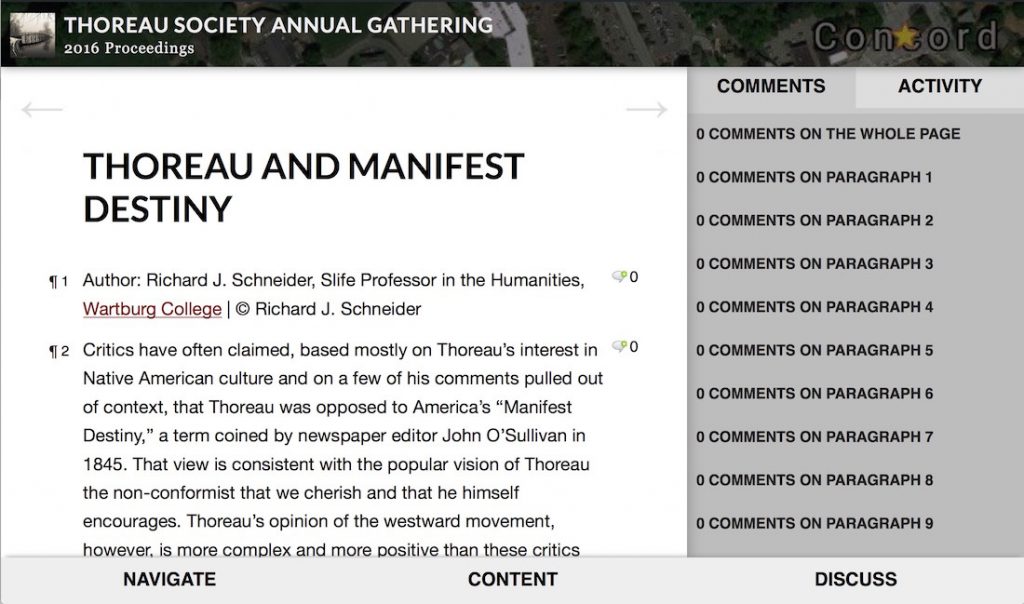At the July 2024 annual gathering of the Thoreau Society, Beth Witherell and I gave a presentation titled “Reading ‘T’ Leaves.” We were on a panel moderated by Kathleen Coyne Kelly titled “The Durable Text: Editing Thoreau.” Beth and I wanted to talk about some of the things we’ve discovered since launching the Walden Manuscript Project with the digitized images of HM 924—the collection of Walden manuscript leaves at the Huntington—and HM 925, the publisher’s proof sheets of Walden.
In particular, we wanted to emphasize what can be learned from focusing on the manuscript and proof sheets as material objects. Digital Thoreau’s fluid-text edition of Walden attempts to model how the text of Thoreau’s book changed across the seven drafts that make up HM 924. But it has little to say about things like how and where on the manuscript page Thoreau inserts text (e.g., above a previously written line, below it, or in the margin), how he deletes text (e.g. by striking out, rubbing out, or scraping off material on the page), or the physical evidence suggesting how he re-used and re-ordered existing material in moving between drafts.
Tracking the textual changes across HM 924’s seven drafts helps us understand the development of Walden as a work—the formal expression of Thoreau’s evolving thought. Inspecting the manuscript and proof sheets as material objects complements this understanding by providing insight into Thoreau’s methods of revision, what we might call his workflow.
In our presentation, Beth and I reviewed the manuscript’s complicated transmission history before diving headlong into the minutiae of manuscript leaves and proof sheets. The slides below for the most part explain themselves, but they’re best viewed in conjunction with our brief explanation of the manuscript’s history on the main page of the Walden manuscript project.
